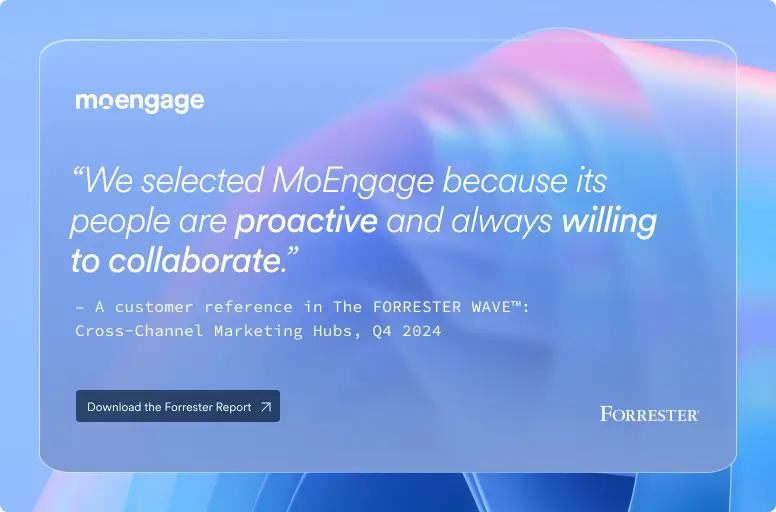🔥 [Panel] Personalization, AI, Trust—What Top BFSI Marketers Are Doing Differently.
Register Now
When it comes to customer preferences and behaviour, a lot seems to have changed during this pandemic. About three to four years ago, nobody had even imagined that things would undergo such drastic changes, and that too, so fast. Things such as nationwide lockdowns, shutting down of offices, growing “work from home” culture, etc., have had a massive impact on the way people think and spend their money. Added to these are more serious factors such as businesses suffering losses and people losing their jobs, and even salary cuts, which have affected the overall buyer behavioural patterns.
Studies have shown that people are more focused on saving their money during this pandemic than spending it on items they can survive without. In other words, people are moving toward spending more on essentials rather than, say, luxury items. And it is this trend, which is obvious when we closely examine the soaring graphs of the FMCG industry, for instance, and the dipping graphs of, say, the travel industry. So there is no doubt that the customer behavioural and transactional patterns will be revived in the future. But it is extremely difficult to say right now as to which of these trends will be limited to the pandemic and which ones will continue even after it.
Pretty much everything has gone online these days, and therefore, it is easier for marketers to draw out their customer profiles and personas based on how they interact online and what they purchase. There is absolutely no doubt that there have been some significant changes in buyer personas during COVID-19. In a webinar, Vandana Chaudhry, Head of Enterprise at Deliveroo; Saket Toshniwal, Head of CRM at Lovoo; Preeti Mundra, Head of Marketing and Partnerships at Liv. Digital Lifestyle Bank; and George Natsvlishvili, Head of Organic Growth at Glovo, spoke to Yash Reddy, Chief Business Officer (APAC & EMEA) at Moengage, about changing buyer persona during the pandemic.
Tracking changing personas of returning buyers is much easier as there is always historical data available that gives information about how they have been interacting and buying online. Therefore, the comparison between then and now becomes a bit simpler. What marketers have to do then is to understand and analyse why a shift might have taken place and develop new and interesting ways to keep the older customers engaged and retain them in the long run.
At times, building a customer’s profile and drawing up his/her specific persona becomes a challenging task in the case of newly acquired customers. But keeping a close eye on their patterns of online interaction and buying behaviour can provide some pretty interesting insights. For instance, Vandana Chaudhry, who works with Deliveroo, Australia’s food delivery service, said that previously they had more customers between the age range of 35 to 44 years. These were specifically people with families and kids who came on their platform for convenience. But after the pandemic started, many new customers they acquired also included young, unmarried professionals. And interestingly, they are not only ordering food for themselves but also for their friends and family members who are located elsewhere.
Similarly, Saket Toshniwal, who works with Lovoo, the online dating app, said that while before the pandemic, more of their users emphasised dating and meeting personally, now there is a shift to interactions via online chats. In fact, currently, there is a huge spike in their app in the number of Daily Active Users (DAUs), which has more than doubled during the pandemic.
Changing trends in buyer persona could also be seen in the case of Glovo, the Spanish on-demand delivery service that currently operates out of 21 countries. While food delivery was their most popular offering before the pandemic, they have witnessed a major shift from the same to the delivery of groceries and essentials. This clearly shows how the pandemic has changed people’s thinking and preferences, thus, in turn, impacting their buying behaviour.
The fact of the matter is that the pandemic has taught people to rethink their spending habits. They are now focusing more on buying essential goods and saving more of their money for posterity. This is also perhaps one of the main reasons why Liv. Digital Lifestyle Bank, whose main focus was on young millennials before the pandemic, has seen a significant spike in customers from the older age group and higher savings.
To a great extent, the pandemic has made businesses rethink and rework their business strategies and their target audiences. However, no matter what kind of customers a company is catering to, the important thing at this point in time is to keep them engaged to build a strong bond with them and ensure the company’s long-term growth.
Be the first to access actionable reports, guides, tips, videos, podcasts from experts in Customer Engagement, retention and more!





MoEngage is an insights-led platform trusted by 1,350+ global brands like McAfee, Flipkart, Domino’s, Nestle, Deutsche Telekom, and more. MoEngage’s powerful analytics, personalization, and AI capabilities give a 360-degree view of your customers and help you create journeys across digital channels.
© Copyright 2025 MoEngage. All Rights Reserved.

Please wait while you are redirected to the right page...
